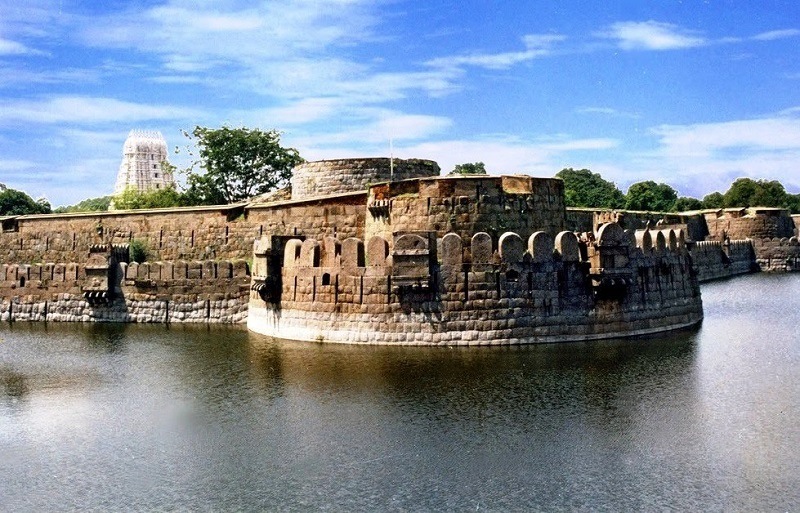Vellore Fort - History, Timings & Entry Fee
![]() Historical
Historical
 #1 of 23 Places to Visit in Vellore
#1 of 23 Places to Visit in Vellore
 Distance (From Vellore Town Railway Station): 1.5 Kms
Distance (From Vellore Town Railway Station): 1.5 Kms
 Trip Duration (Including Travel): 1 Hour
Trip Duration (Including Travel): 1 Hour
 Transportation Options: Cab / Auto
Transportation Options: Cab / Auto
 Travel Tips: Following places are situated inside Vellore Fort and are visited together:
Travel Tips: Following places are situated inside Vellore Fort and are visited together:
Jalakandeswarar Temple
Tipu Mahal and Hyder Mahal
Vellore Fort Mosque
St. Johns Church
At a distance of 1.5 km from Vellore Town Railway Station, the Vellore Fort is a large 16th-century fort situated in heart of the Vellore city in Tamil Nadu, India. It is one of the famous heritage sites near Chennai, and among the must include places in Vellore holiday packages.
Vellore Fort was built in the 16th century CE by Channa Bommi Nayaka and Thimma Reddy Nayaka, the Chieftains under the Vijayanagara ruler Sadashiva Raya. This granite fort happens to be one of the best examples of military architecture in South India and among the unique forts in India. The fort was captured in the 17th century by the Adil Shahis, the Muslim rulers from Bijapur. It was then taken by the Marathas, and later by Daud Khan of Delhi in the early 18th century. The British took control of this fort in 1768 and controlled it until Independence. During British rule, the Tipu Sultan's family and the last king of Sri Lanka, Vikrama Rajasinha were held as prisoners in the fort.
The fort is an excellent example of military architecture and has withstood several attacks. The Vellore Fort was constructed with granite from the nearby quarries in Arcot and Chittor districts. It spreads over an area of 133 acres. It has huge double walls with large bastions projecting irregularly. It has a giant moat at its entrance, where 10,000 crocodiles used to swim earlier. It is one of the most visited tourist places in Vellore.
The fort houses a temple, a mosque, a church, the renowned Vellore Christian Hospital, and many other buildings that are now used as public offices. The Jalagandeeswarar Temple situated inside the fort is noted for its sculptures. The mosque inside the fort was constructed during the last Arcot Nawab period. The Church inside the fort was constructed during the early British period. This fort also includes Muthu Mandapam, which is a memorial built around the tombstone of Vikrama Rajasinha, the last ruler of Sri Lanka. The Government Museum inside this fort showcases objects of historic value, recovered from the region. This 16th-century fort is open for tourists and is well maintained by the Archaeological Survey of India.
Fort Timings: 8 AM - 6 PM
Museum Timings: 9 AM - 12.30 PM and 2 PM - 5 PM on all days except on public holidays.
Entry: Rs. 5 for Person
















